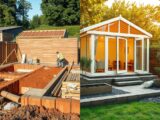can you sleep in a garden room in the uk?
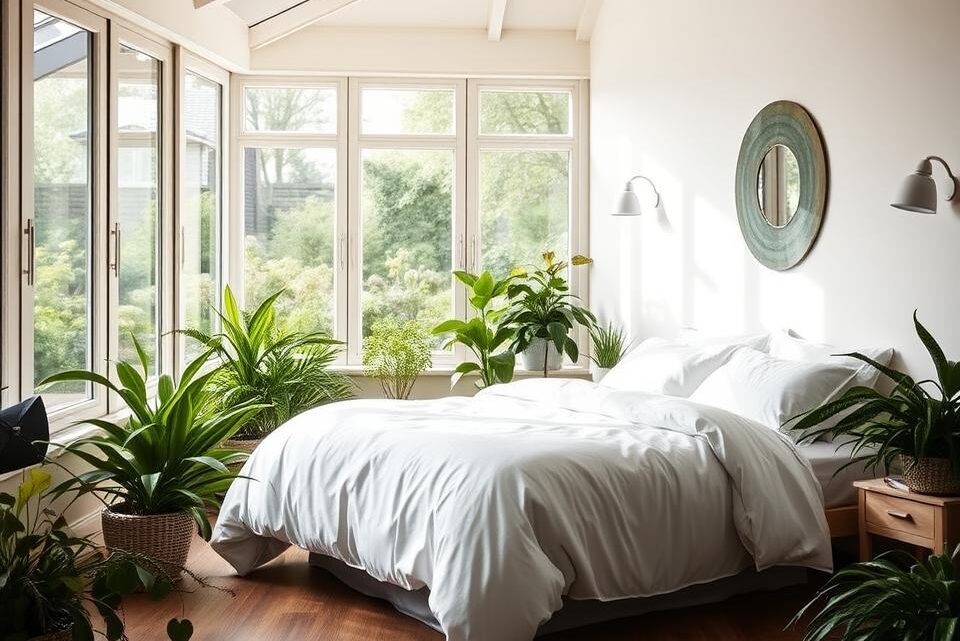
Garden rooms have become increasingly popular across Britain as homeowners seek extra living space without the hassle of moving house. Many people wonder about the legal requirements garden room bedroom conversions must meet. The good news is that using your garden building for sleeping is perfectly possible, but certain rules apply.
Understanding garden room sleeping regulations UK homeowners must follow can save you time and money. Whether you’re planning a guest suite, teenager’s retreat, or home office that doubles as overnight accommodation garden building spaces offer flexibility. Local councils have specific guidelines about when these structures can be used for sleeping.
Before setting up beds in your garden room, you’ll need to check if your plans comply with building standards. Some garden rooms fall under permitted development rights, whilst others require formal planning permission. The distinction often depends on size, location, and intended use of your overnight accommodation garden building.
Inhaltsverzeichnis
Key Takeaways
- Garden rooms can legally be used for sleeping in the UK with proper compliance
- Permitted development rights cover many garden buildings under 2.5 metres high
- Planning permission may be needed if the room becomes a separate dwelling
- Building regulations apply when installing electricity, water, or using as primary accommodation
- Council tax implications depend on whether the space is ancillary to the main house
- Proper insulation and safety features are essential for overnight use
Understanding Garden Rooms and Their Purpose
Garden rooms have become increasingly popular across the UK as versatile outdoor structures that enhance living space without the complexity of home extensions. These standalone buildings offer homeowners a practical solution for creating additional rooms in their gardens, serving various purposes from work spaces to relaxation areas.
What Defines a Garden Room?
A garden room definition UK typically refers to a self-contained structure built in residential gardens, completely separate from the main house. These buildings feature proper insulation, electrical connections, and weatherproofing to ensure year-round usability. Unlike sheds or summerhouses, garden rooms are constructed to higher standards with double-glazed windows, solid foundations, and durable exterior cladding.
Common Uses for Garden Rooms
The outbuilding purpose varies greatly depending on individual needs. Many homeowners transform these spaces into productive environments that enhance their daily lives. Popular uses include:
- Home offices for remote working
- Art studios and creative workshops
- Fitness rooms and yoga studios
- Entertainment spaces and games rooms
- Guest accommodation for visitors
- Children’s playrooms
The Difference Between Garden Rooms and Traditional Extensions
Understanding garden office vs extension differences helps homeowners make informed decisions about expanding their living space. Key distinctions include:
| Garden Rooms | Traditional Extensions |
|---|---|
| Standalone structure | Attached to main house |
| No foundation connection required | Requires integrated foundations |
| Often falls under permitted development | Usually needs full planning permission |
| Quicker installation (2-4 weeks) | Lengthy construction (3-6 months) |
| Less disruptive to daily life | Major disruption during building |
| Lower overall cost | Higher construction expenses |
UK Building Regulations for Garden Rooms
Garden rooms offer a brilliant way to expand your living space without the hassle of traditional building work. Before you start planning your outdoor sanctuary, it’s essential to understand the regulations that govern these structures. The rules around permitted development rights garden rooms can seem complex, but they’re designed to ensure safety whilst giving homeowners flexibility.
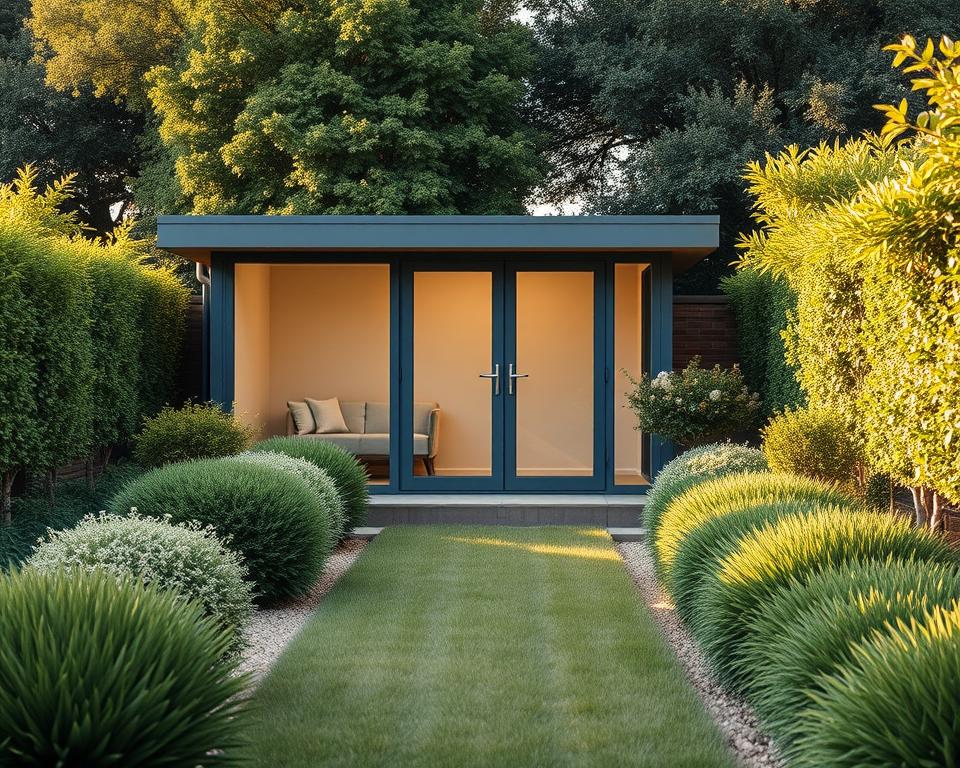
Permitted Development Rights
Most garden rooms fall under permitted development rights, which means you won’t need formal planning permission. These rights allow you to build certain structures without going through the full planning process. Your garden room must meet specific criteria to qualify:
- Maximum height of 2.5 metres if within 2 metres of any boundary
- Maximum height of 4 metres with a dual-pitched roof elsewhere
- No more than 50% of your garden area covered by buildings
- Single-storey structure only
When Planning Permission Is Required
You’ll need planning permission outbuildings in several situations. Listed buildings, conservation areas, and Areas of Outstanding Natural Beauty have stricter rules. Planning permission becomes necessary if your garden room exceeds the height limits or you want to use it as self-contained living accommodation.
| Scenario | Planning Permission Required? |
|---|---|
| Standard garden office under 2.5m | No |
| Structure over 4m high | Yes |
| Listed property | Yes |
| Self-contained accommodation | Yes |
Building Control Requirements
Whilst many garden rooms don’t need planning permission, building control regulations UK still apply for larger structures. Any garden room with an internal floor area exceeding 30 square metres requires building control approval. This ensures your structure meets safety standards for insulation, electrical work, and structural stability.
Can You Sleep in a Garden Room in the UK?
The simple answer is yes, you can sleep in your garden room, but certain conditions apply. UK accommodation regulations allow occasional overnight use garden rooms without special permissions. Think of it as having friends stay over or using the space for a weekend retreat.
Regular sleeping in garden buildings legally becomes more complex. If you plan to use your garden room as a bedroom every night, different rules come into play. The structure must meet specific standards for habitable spaces under Part P of the Building Regulations.
- Occasional sleeping requires no special permissions
- Regular use needs proper insulation meeting U-value standards
- Adequate ventilation systems must be installed
- Electrical installations require Part P certification
- Fire safety measures become mandatory
The distinction between ancillary and primary accommodation matters greatly. Ancillary use means the garden room supplements your main house. You sleep there occasionally whilst maintaining your primary residence in the main dwelling. This arrangement typically faces fewer regulatory hurdles.
“A garden room used for occasional overnight stays remains ancillary to the main dwelling and doesn’t require change of use permission.” – Planning Portal guidance
Converting your garden room into permanent sleeping quarters triggers stricter UK accommodation regulations. The space must achieve thermal efficiency standards, proper ventilation rates, and safety features equivalent to a traditional bedroom. Local authorities may require building control approval for these modifications.
Legal Considerations for Sleeping in Garden Rooms
Whilst garden rooms offer wonderful extra space, using them for sleeping brings specific legal requirements you must understand. The distinction between occasional use and permanent sleeping arrangements affects your tax obligations, insurance coverage, and compliance with local regulations.
Primary Residence vs Ancillary Accommodation
Your garden room must function as part of your main home rather than a separate dwelling. Under ancillary accommodation rules, the structure should support your household’s activities without becoming an independent living unit. This means avoiding installations like separate kitchens or creating completely self-contained spaces.
Local authorities regularly check whether garden buildings comply with these requirements. Signs that might trigger investigation include:
- Separate utility meters
- Independent postal addresses
- Full bathroom and kitchen facilities
- Permanent bed arrangements
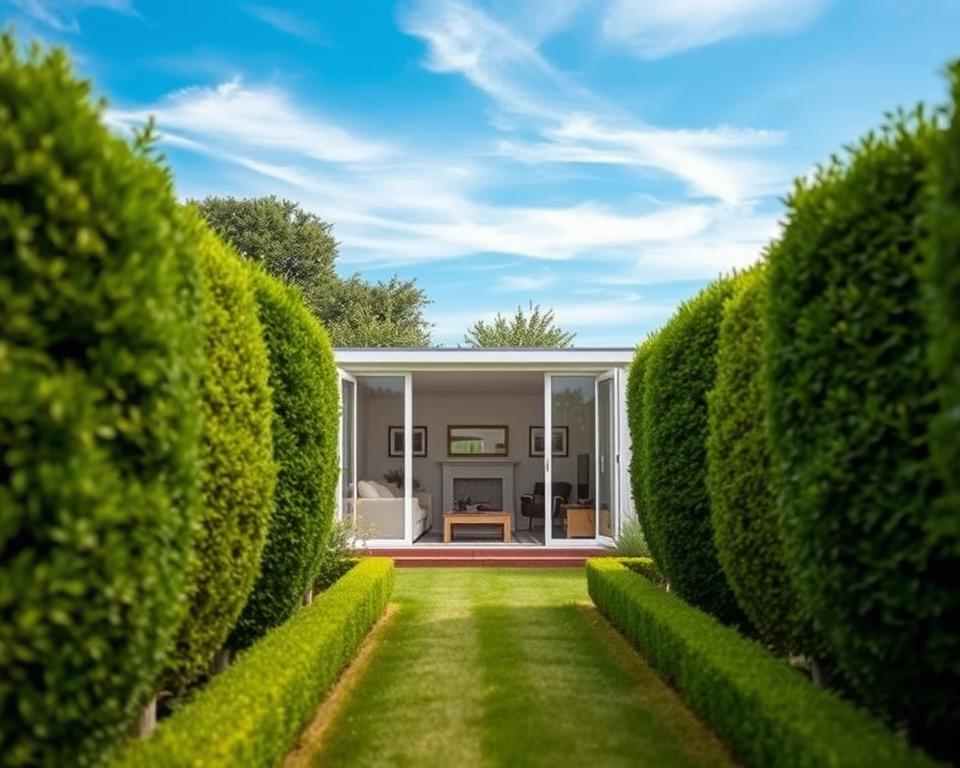
Council Tax Implications
Understanding council tax garden rooms regulations proves essential for avoiding unexpected charges. When your garden room remains genuinely ancillary to your main property, it falls under your existing council tax band. Creating a self-contained unit risks separate council tax assessment, potentially doubling your annual payments.
Insurance Considerations
Standard home insurance outbuildings coverage rarely extends to valuable contents or overnight use. Contact your insurance provider before using your garden room for sleeping. Most policies require notification about significant changes in usage, especially when expensive furniture or electronics are installed. Failing to update your policy could void claims if damage or theft occurs.
Making Your Garden Room Sleep-Ready
Transforming your garden room into a comfortable sleeping space requires careful planning and specific modifications. The process of converting garden room bedroom spaces involves several essential upgrades that ensure both comfort and compliance with safety standards.
First, flooring plays a crucial role in creating a sleep-suitable outbuilding. Solid timber flooring or quality laminate provides both insulation and comfort underfoot. Consider adding underfloor heating for those chilly British mornings, as it creates an even temperature throughout the space without taking up valuable room.
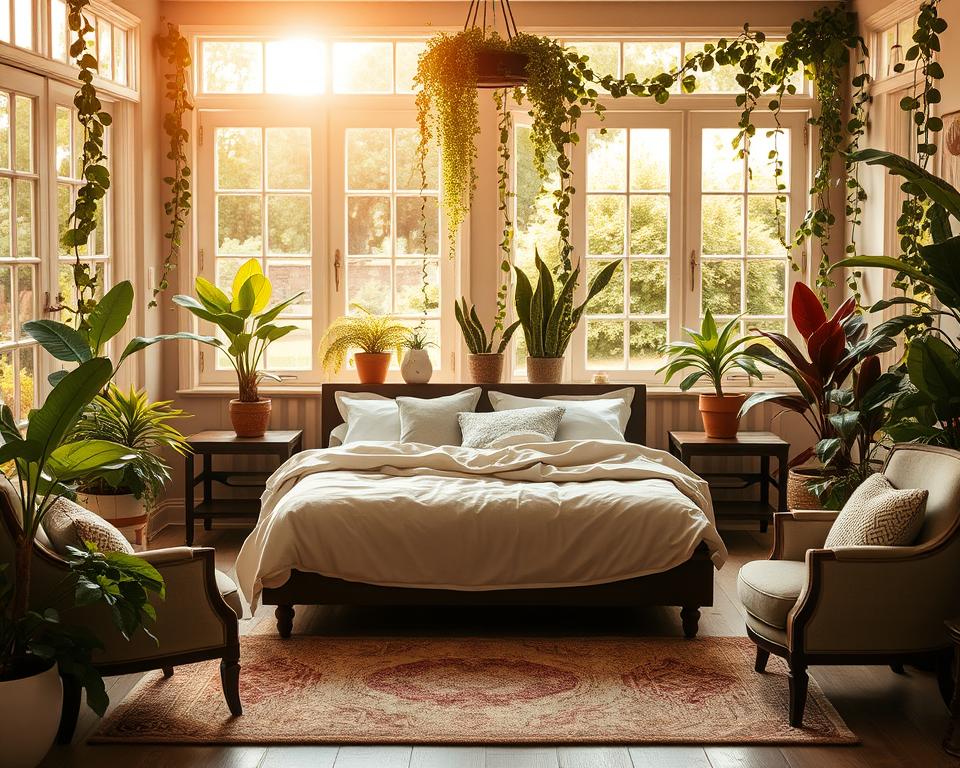
Electrical installations form the backbone of any proper garden room accommodation setup. All electrical work must comply with Part P building regulations, which means hiring a qualified electrician is non-negotiable. You’ll need multiple socket outlets for bedside lamps, charging points, and perhaps a television. Dimmer switches create ambient lighting perfect for evening relaxation.
Sound insulation deserves special attention when converting garden room bedroom areas. Double-glazed windows and doors reduce external noise, whilst acoustic insulation in walls creates a peaceful sleeping environment. Some homeowners install blackout blinds or curtains to ensure complete darkness for quality sleep.
If you’re planning an ensuite facility within your sleep-suitable outbuilding, plumbing becomes another consideration. Running water and waste pipes from the main house requires professional installation and may need additional permissions. A small washbasin or compact shower room can transform your garden room into a self-contained guest suite.
Insulation and Climate Control Requirements
Creating a comfortable sleeping environment in your garden room requires careful attention to insulation and climate control. Proper thermal efficiency ensures year-round comfort whilst keeping energy costs manageable. The right combination of insulation, heating, and ventilation transforms your garden building into a cosy retreat suitable for overnight stays.
Wall and Roof Insulation Standards
Meeting proper garden room insulation standards is essential for maintaining comfortable temperatures. Current recommendations suggest achieving U-values of 0.18 W/m²K for walls and 0.13 W/m²K for roofs. These values ensure your garden room stays warm in winter and cool in summer.

- PIR (polyisocyanurate) boards for excellent thermal performance
- Mineral wool for sound absorption and fire resistance
- Sheep’s wool insulation for eco-friendly options
- Multi-foil insulation for space-saving solutions
Heating Solutions for Year-Round Comfort
Heating garden buildings efficiently requires choosing the right system for your needs. Electric panel heaters offer simple installation and precise temperature control. Infrared heating panels provide instant warmth without drying the air. Air conditioning units deliver both heating and cooling capabilities, perfect for UK weather variations.
Ventilation and Air Quality
Meeting ventilation requirements outbuildings prevents condensation and maintains healthy air quality. Install trickle vents above windows to ensure continuous airflow. Opening windows on opposite walls creates cross-ventilation during warmer months. Mechanical ventilation systems with heat recovery offer year-round fresh air whilst preserving warmth.
Safety Features for Overnight Use
When planning to sleep in your garden room, safety should be your top priority. Creating a secure and protected environment requires careful attention to several critical elements. From preventing fire hazards to ensuring proper access points, each safety feature plays a vital role in making your garden sleeping space both comfortable and compliant with UK regulations.
Fire Safety Regulations
Fire safety garden rooms must meet specific standards to protect occupants during overnight stays. Smoke alarms are legally required in any space used for sleeping, and these should be installed on the ceiling at least 300mm from walls. Carbon monoxide detectors are essential if you’re using any fuel-burning appliances for heating.
Fire-resistant materials should be used throughout the construction. Internal walls need a minimum 30-minute fire resistance rating, whilst electrical installations must comply with Part P of the Building Regulations. Keep a fire extinguisher readily accessible and ensure all electrical work is certified by a qualified electrician.
Security Measures and Locking Systems
Security locks outbuildings require should match those of your main property. A quality mortice lock provides excellent protection against forced entry. Consider installing motion-activated security lighting around your garden room’s perimeter to deter intruders.
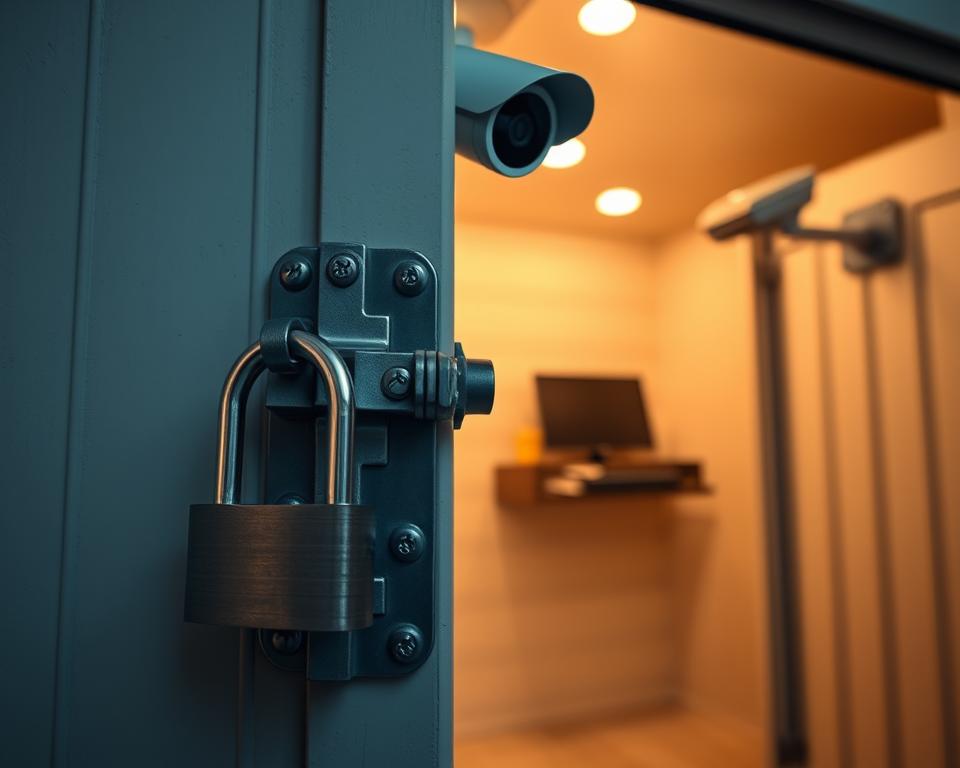
- Window locks on all opening windows
- CCTV cameras covering entrance points
- Smart locks for remote monitoring
- Security film on glass panels
Emergency Access and Escape Routes
Emergency exits requirements stipulate that sleeping spaces must have adequate escape routes. Windows designated as emergency exits need a minimum clear opening of 450mm x 450mm, with the bottom of the opening no more than 1,100mm from floor level.
| Exit Feature | Minimum Requirement | Recommended Standard |
|---|---|---|
| Window Opening Width | 450mm | 600mm |
| Window Opening Height | 450mm | 500mm |
| Sill Height from Floor | 1,100mm maximum | 800-900mm |
| Door Width | 775mm | 900mm |
Ensure pathways to exits remain clear and well-lit. Emergency lighting systems activate automatically during power failures, guiding occupants safely outside. Regular testing of all safety equipment keeps your garden room secure for peaceful overnight stays.
Practical Considerations for Garden Room Sleeping
Transforming your garden room into comfortable sleeping quarters requires careful planning. The garden room bedroom practicalities extend beyond simply placing a bed in the space. Creating a genuinely restful environment means addressing several key factors that affect sleep quality.
Distance from your main house plays a crucial role in overnight comfort outbuildings. You’ll need convenient access to bathroom facilities, especially during night-time hours. Installing a pathway with motion-sensor lighting ensures safe passage in darkness. Some homeowners opt for installing an en-suite bathroom, though this requires additional plumbing work.
Essential sleeping accommodation amenities make the difference between occasional use and regular enjoyment:
- Blackout blinds or curtains for undisturbed sleep
- Sound insulation to minimise outdoor noise
- Built-in storage for bedding and clothing
- Reliable WiFi connection for entertainment
- Bedside lighting with dimmer switches
| Amenity | Budget Option | Premium Choice |
|---|---|---|
| Blackout Solutions | Roller blinds (£50-100) | Electric blinds (£300-500) |
| Storage | Freestanding wardrobe | Built-in fitted units |
| Climate Control | Portable heater/fan | Air conditioning unit |
Quality mattresses and breathable bedding create the foundation for restful sleep. Consider space-saving furniture like ottoman beds with integrated storage. Position your bed away from windows to reduce draughts and early morning light disturbance.
Conclusion
This garden room sleeping summary shows that you can use your garden building for overnight stays in the UK. The key is following the right steps and understanding what’s required. Your garden room must remain an ancillary space to your main house rather than becoming a separate dwelling. This means it should complement your home without functioning as an independent living unit.
Our UK regulations overview highlights several crucial points to remember. You need proper insulation that meets British Standards for year-round use. Safety features like smoke alarms and secure locks are essential. Most garden rooms fall under permitted development rights, but check with your local council if you plan significant modifications. Companies like Green Retreats and Booths Garden Studios can help ensure your structure meets all necessary standards.
This garden accommodation guidance aims to help you create a comfortable and legal sleeping space. Whether you want a guest bedroom, teenage retreat, or quiet sanctuary, proper planning makes it possible. Contact your local planning department if you have specific questions about your property. With the right approach, your garden room can become a valuable addition that enhances your lifestyle whilst staying within UK regulations.
FAQ
Can I legally sleep in my garden room in the UK?
Yes, you can legally sleep in your garden room as ancillary accommodation to your main house. Occasional overnight use is perfectly acceptable, but if you plan to use it regularly for sleeping or as permanent living quarters, you’ll need to ensure it meets building regulations for habitable spaces, including proper insulation, ventilation, and safety features.
Do I need planning permission to use my garden room as a bedroom?
Most garden rooms fall under permitted development rights if they’re under 2.5 metres in height and don’t cover more than half your garden area. However, regular sleeping use doesn’t typically require additional planning permission as long as the structure remains ancillary to your main dwelling. You will need building control approval if your garden room exceeds 30 square metres internally.
Will I have to pay separate council tax for a garden room bedroom?
No, you won’t pay separate council tax as long as your garden room remains ancillary accommodation to your main house. This means it should be used by family members or guests rather than rented out as a separate dwelling unit. If your local council determines it’s being used as an independent living space, you could face additional council tax charges.
What safety features are required for sleeping in a garden room?
Essential safety features include smoke alarms and carbon monoxide detectors, which are mandatory for any sleeping space. You’ll also need escape windows that meet the minimum opening requirement of 450mm x 450mm, proper door locks for security, and adequate lighting. Consider installing security measures like motion-sensor lights or CCTV, especially since the structure is detached from your main house.
What insulation standards should my garden room meet for year-round sleeping?
For comfortable year-round use, your garden room should achieve minimum U-values of 0.18 W/m²K for walls and 0.13 W/m²K for roofs. This level of insulation, combined with double-glazed windows and proper ventilation, will ensure the space remains warm in winter and cool in summer whilst preventing condensation issues.
Do I need to update my home insurance if I sleep in my garden room?
Yes, you should inform your insurance provider about using your garden room for overnight accommodation. This ensures coverage for any valuable contents and protects you in case of incidents during overnight use. Some insurers, like Aviva or Direct Line, may require a small adjustment to your premium to cover the additional use.
Can I install a bathroom in my garden room bedroom?
Yes, you can install bathroom facilities, but this requires professional installation meeting Part P electrical regulations and proper plumbing connections. You’ll need to ensure adequate drainage and may require building control approval for the additional plumbing work. Companies like Composite Garden Buildings or Green Retreats specialise in garden rooms with ensuite facilities.
How far can my garden room bedroom be from the main house?
There’s no specific legal distance requirement, but practical considerations suggest keeping it reasonably close for convenience. You’ll need to consider access to the main house for facilities (unless you install an ensuite), WiFi connectivity, and security. Most homeowners find that placing the garden room within 10-20 metres of the main house provides the best balance of privacy and practicality.
